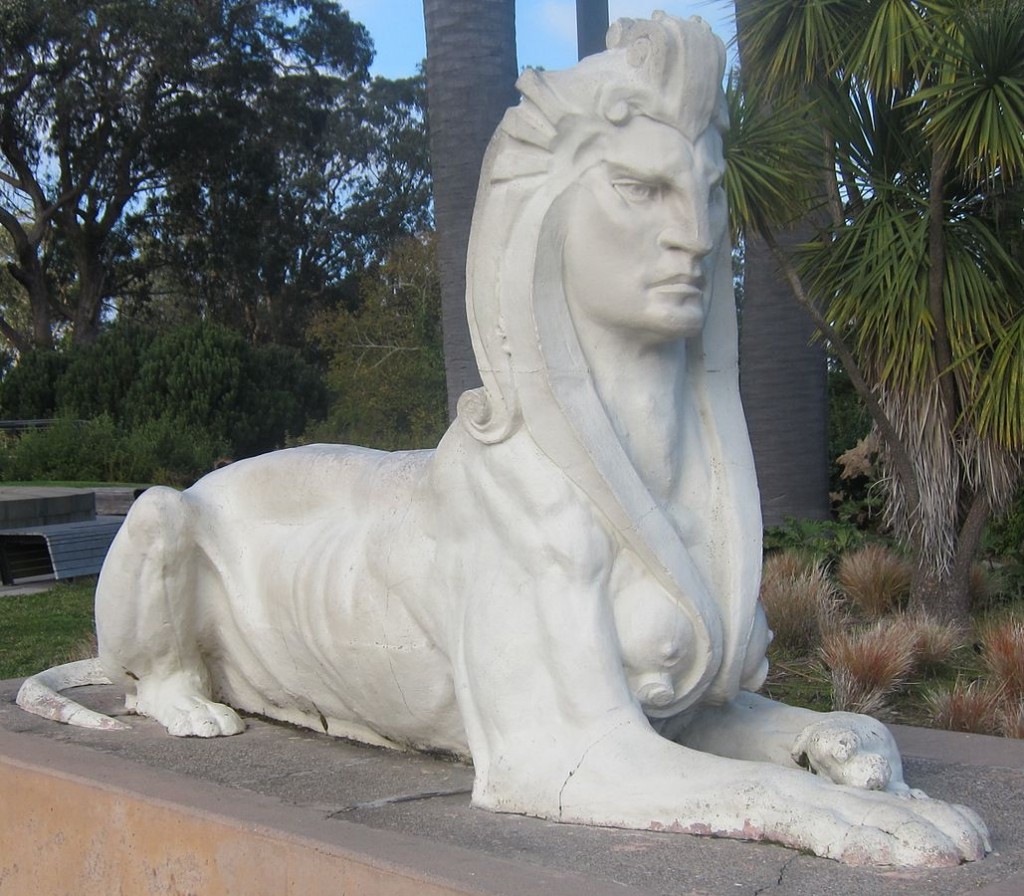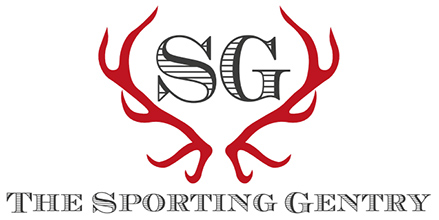 Putnam was born on September 6, 1873, in Waveland, Mississippi, whilst his family was traveling. He had an older brother, George, born in New Orleans, and a younger sister, Clara Elizabeth, born in Mississippi. Their father, Oramel Hinkley Putnam (1841–1880), was a civil engineer from Vermont and served in the Union Army during the Civil War. Oramel Putnam was a railroad worker, and the family frequently relocated during the sculptor’s early years. The Putnams eventually settled in Omaha, Nebraska, for an extended time whilst Putnam was growing up; Putnam enjoyed drawing animals and modeling them in clay during this period. He experienced a serious accident as a child, falling forty feet out of a tree and receiving a head injury. In 1899 Putnam married and moved permanently to San Francisco, employed as an assistant to Rupert Schmid, working primarily as a sculptor of architectural sculpture.
Putnam was born on September 6, 1873, in Waveland, Mississippi, whilst his family was traveling. He had an older brother, George, born in New Orleans, and a younger sister, Clara Elizabeth, born in Mississippi. Their father, Oramel Hinkley Putnam (1841–1880), was a civil engineer from Vermont and served in the Union Army during the Civil War. Oramel Putnam was a railroad worker, and the family frequently relocated during the sculptor’s early years. The Putnams eventually settled in Omaha, Nebraska, for an extended time whilst Putnam was growing up; Putnam enjoyed drawing animals and modeling them in clay during this period. He experienced a serious accident as a child, falling forty feet out of a tree and receiving a head injury. In 1899 Putnam married and moved permanently to San Francisco, employed as an assistant to Rupert Schmid, working primarily as a sculptor of architectural sculpture.
Scripps commission
Putnam received his first major commission from the newspaperman, E. W. Scripps (1854–1926), for the creation of five monumental figures from California history and lore. Putnam’s brother, George, worked for Scripps’ secretary, and this arrangement led to Putnam visiting the Scripps Ranch at Miramar, where he was awarded the commission. Five works were initially planned for locations on the Scripps estate, and the designs were to be approved by Scripps.
San Francisco, 1900 to 1905
In San Francisco, Putnam was friends with artist and stained glass designer Bruce Porter (1865–1943) and the tonalist painter Gottardo Piazzoni (1872–1945); these friendships would help sustain the sculptor in the future. He shared a studio with sculptor Earl Cummings (1876–1936), and Piazzoni at 8 Montgomery Street (part of the Montgomery Block, where a number of other artists and bohemians lived). Literary figures such as Jack London (1876–1916) and George Sterling were known to visit the studio. Putnam worked with progressive painters like Maynard Dixon (1875–1946), Matteo Sandona (1881–1964), and Xavier Martínez (1869–1943), all of whom left the San Francisco Art Association and formed the California Society of Artists with Piazzoni and Putnam. The breakaway group organized a single exhibition that was held at Charles Peter Neilson’s studio in 1902. Neurological problems which began in 1909 led to the removal of a brain tumor in 1911. As a result of the operation, Putnam was paralyzed on his left side and his formal perceptions were impaired.
Panama-Pacific International Exposition
Putnam’s contribution to the Panama-Pacific International Exposition, held February 4 to December 15, 1915, was a mermaid situated in a fountain designed by architect Arthur Brown, Jr. The mermaid was not representative of the sculptor’s earlier work; Putnam had been significantly hampered by a stroke caused by the 1911 surgery. Included in the fair’s exhibition galleries was a case containing a selection of Putnam’s bronze sculptures, whilst his bronze group, The Puma and the Snake, was on exhibit in another gallery. The bronze group, which was in the fair’s competition for honors, generated positive reviews, with Neuhaus writing that “Arthur Putnam, whose case of animal sculpture is attracting most keen attention, a man for whom the word genius hardly seems too weighty, was awarded a gold medal.”
Rediscovery of the Jack London Writing Tablet
The Jack London Writing Tablet, considered to be one of Putnam’s most interesting, impressive, and personal works, had faded into obscurity after its presentation at the Children’s Pet Exhibition of 1917 in San Francisco. The California redwood sculpture was rediscovered by San Diego antique dealer Christian Chaffee in 1998.
The history of the Jack London piece remains unclear, but it was likely created in 1903. Putnam and Jack London were good friends. The animal depicted in the sculpture has been identified as “Old Buck”, the resilient dog from London’s major work, The Call of the Wild. Research supported by The Huntington Library confirms that Jack London owned the piece in 1916.
Collections
The Bohemian Club, San Francisco (Primitive Man)
Fine Arts Museum of San Francisco, The M.H. De Young Museum
Fine Arts Museums of San Francisco, Palace of Legion of Honor (Spreckels Collection)
San Diego Museum of Fine Art, San Diego (Spreckels Collection)
Boston Museum of Art, Boston (The Death)
Metropolitan Museum of Art, New York (Snarling Tiger)
Los Angeles County Museum of Art, Los Angeles (Coyote)
Portland Art Museum, Portland, Oregon
Mills College, (The Puma and the Footprint)
National Museum of Wildlife Art (Puma in Combat with Serpent)
Oakland Museum of California, Oakland (Puma and Deer and others)
Crocker Museum, Sacramento, California (Twilight Venus Holding Staff)
Hood Museum of Art, Dartmouth College (Puma and Snakes)
Public Monuments and Sculpture Groups
Concrete sphinx by Arthur Putnam, c. 1910
Winning of the West, light standard in San Francisco, 1908
Fr. Junipero Serra, at the Mission Dolores Garden in San Francisco
Grizzly Bear Cubs on the Fountain at the Circle in Berkeley, California
The Indian, Presidio Park, San Diego (1905)
Sphinx, Golden Gate State Park, San Francisco (1907)
Nymphs and Satyrs, Plaster Reliefs, Hippodrome Theatre, San Francisco (1907)
Decorations, Bohemian Club, San Francisco (Willis Polk
The Padre, Presidio Park, San Diego (1908)
Winged Angels, Marble, Unitarian Church, San Francisco (1908)
Decorations, Bank of California, San Francisco, 1908 (Walter Danforth Bliss, Architect)
Winning of the West, Light Standard Decoration, San Francisco (Willis Polk, Architect) (1908)
Sloat Monument, Monterey, California (1908) (Melvin Earl Cummings, architect)
Two Pumas, Berthold Monument, Monterey (1910)
The Ploughman, Scripps Institute of Oceanography (1910)
Lion, Marble, Haddon Hill Development, Oakland (1912)
Fr. Junipero Serra, Mission Dolores Garden, San Francisco
Decorative Ceiling, Flood Mansion, (Now Pacific Union Club), San Francisco
Bas-Relief Decorations, San Francisco Masonic Temple
Bas-Relief Decorations, San Francisco Examiner Building
Bas-Relief Decorations, San Francisco Call Building
Mountain Lions, Crocker National Bank, San Francisco (Willis Polk, Architect)
Bronzes, Stock Exchange Club, San Francisco Stock Exchange
Grizzly Bear Cubs, The Fountain, at the Circle, Berkeley, California (John Galen Howard, architect) (1911)
The Sea Nymph, Fountain, Panama-Pacific International Exposition (1915)
Bas-Reliefs, Lotta’s Fountain, Kearny and Geary Streets, San Francisco (1916)
Memberships
San Francisco Art Association, San Francisco
California Society of Artists, San Francisco (founding member, 1902)
Bohemian Club, San Francisco (1910)
National Sculpture Society, New York (1913)
Solo Exhibitions
1923 – Arthur Putnam, Palace of Legion of Honor, San Francisco
1930 – Arthur Putnam Memorial Exhibition, Legion of Honor, San Francisco
1932 – Arthur Putnam, Legion of Honor, San Francisco
1940 – Arthur Putnam, Legion of Honor, San Francisco
1945 – Bronzes by Arthur Putnam, Legion of Honor, San Francisco
1956 – Arthur Putnam Memorial Exhibition, Legion of Honor, San Francisco
1958 – Arthur Putnam Memorial Exhibition, Legion of Honor, San Francisco
1978 – Arthur Putnam, Oakland Museum of Art
2004 – Arthur Putnam, San Francisco Airport Museum, San Francisco (Works from the Fine Arts Museums of San Francisco)
Group Exhibitions
1900 – San Francisco Press Club, San Francisco
1901 – San Francisco Sketch Club, San Francisco
1902 – 1st Annual Exhibition, California Society of Artists, Charles Neilson Studio, San Francisco
1903 – Spring Exhibition, Mark Hopkins Institute
1906 – Rome International Exposition of Fine Arts
1907 – Salon de Societe National des Beaux-Arts, Paris, France
1908 – Special Exhibition of Contemporary Art, National Arts Club, New York (Lions)
1908 – Bronzes by Group of American Artists, Macbeth Galleries, New York
1909 – 104th Annual Exhibition, Pennsylvania Academy of Fine Arts (Sitting Puma)
1909 – Architectural Exhibition, Detroit Architecture Club & Detroit Society of Arts & Crafts, Detroit Museum of Art
1909 – Bronzes by American Artists Exhibition, Macbeth Galleries, New York
1910 – Metropolitan Museum of Art, New York
1911 – Small Bronzes, Macbeth Galleries, New York
1912 – Inaugural Exhibition, Toledo Museum of Art, Toledo, Ohio (Puma)
1913 – International Exhibition of Modern Art (The Armory Show), New York
1914 – Paintings and Sculpture, Bohemian Club, San Francisco
1915 – Panama-Pacific International Exposition, San Francisco
1916 – Sam Francisco Art Association Annual Exhibition, San Francisco (The Ploughman)
1916 – Bohemian Club Exhibition, San Francisco
1916 – 29th Exhibition of American Paintings and Sculpture, Art Institute of Chicago (Standing Puma, Crouching Coyote, The Combat, Walking Bear, Indian and Puma Wresting, Coyote and Snake, Listening Puma)
1919 – Toby Rosenthal Memorial. Exhibition, California Contemporary Artists, The Palace of Fine Arts, San Francisco (Puma and Deer, Standing Puma, Buffalo Hunt, Skunked Wild Cat)
1919 – American Bronzes, Cleveland Museum of Art, December
1920 – Pennsylvania Academy of Fine Arts (Puma Lying on its Side)
1920 – Fourth Annual Exhibition, Greenwich Society of Artists, Greenwich, Connecticut
1921 – San Diego Museum of Art, San Diego
1923 – Exhibition of American Sculpture, National Sculpture Society
1930 – Palace of Legion of Honor, San Francisco
1935 – California-Pacific International Exposition, San Diego, California
1939 – Golden Gate International Exposition
*Information from Wikipedia.
